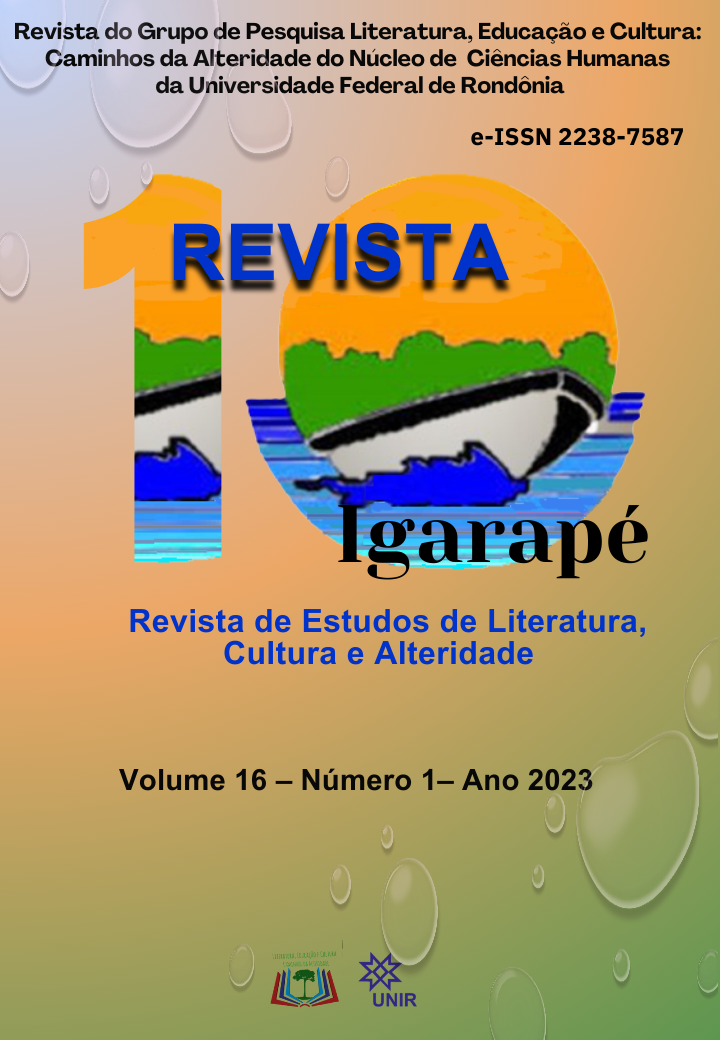O olho mais azul
a influência do racismo na construção identitária e na inferiorização de mulheres negras
DOI:
https://doi.org/10.47209/2238-7587.v.16.n.1.7617Keywords:
feminismo negro, interseccionalidade, branquitudeAbstract
The work had as objective to analyze the Toni Morrison’s novel, titled “The Bluest eye”, delimiting the analyzis in the representations of black female bodies in the shell-work, relating this representations to hierarchical gender issues. The narrative has as main character Pecola Breedlove, a 12 year old black girl that lives in precarious situation, both Community and Family. That said, Pecola prays every day to have blue eyes, because she believes with blue eyes she can be welcome by her family. Therefore, it was made a theoretical and critical approach about the black feminism’s historical
and social contexto, using authors as Davis (2016); hooks (2014); Ribeiro (2018), and others. Furthermore, it was noticed the necessity in to investigate beyond of issues about gender and race, since the discriminations wiht not-white women are justify also in their low class. For this, it is used in this word the Crenshaw’s interseccional literacy (1991), to include diverses prerogatives that intersect and establish a desmoralization sistem very great under the not-white female figure. The research shows the importance of developing works that promote reflection and change in a social base structured by the racial and gender prejudice. It is importante to investigate the multiple experiences of women besides feminist theories, but also through of theories that focus on different types of violence suffered by this non-standard woman, for this the necessity to include the interseccional theory, it shows how the black woman survive before a society that Always benefits those (and anothers women) standardized by the eurocentrism, grade and cisheteronormativity.
Downloads
References
AKOTIRENE, Carla. Interseccionalidade. São Paulo: Polen, 2019.
CRENSHAW, Kimberle. Mapping the margins: interseccionality, identity politics and violence against women of color. Stanford law review, 1991. (online). Disponível em: https://blackwomenintheblackfreedomstruggle.voices.wooster.edu/wpcontent/uploads/sites/210/2019/02/Crenshaw_mapping-the-margins1991.pdf>. Acesso em: 01/03/2023
DAVIS, Angela. Mulheres, raça e classe. São Paulo: Boitempo, 2016.
HOOKS, bell. Não sou eu uma mulher. Plataforma Gueto, 2014. (online). Disponível em: https://plataformagueto.files.wordpress.com/2014/12/nc3a3o-sou-eu-uma-mulher_traduzido.pdf. Acesso em: 01/03/2023.
MORRISON, Toni. O olho mais azul. São Paulo: Companhia das Letras, 2019.
RIBEIRO, Djamila. Quem tem medo do feminismo negro? São Paulo: Companhia das Letras, 2018.
SOUZA, Augusto de Assis. Episódios de opressão cotidiana no romance O Olho Mais Azul. Orientadora: Danielle de Luna e Silva. 2022. 61 f. Trabalho de conclusão de curso (Curso de Licenciatura em Letras), Universidade Federal da Paraíba, João Pessoa, 2022.
Downloads
Published
How to Cite
Issue
Section
License
Copyright (c) 2023 Revista de Estudos de Literatura, Cultura e Alteridade - Igarapé

This work is licensed under a Creative Commons Attribution 4.0 International License.

